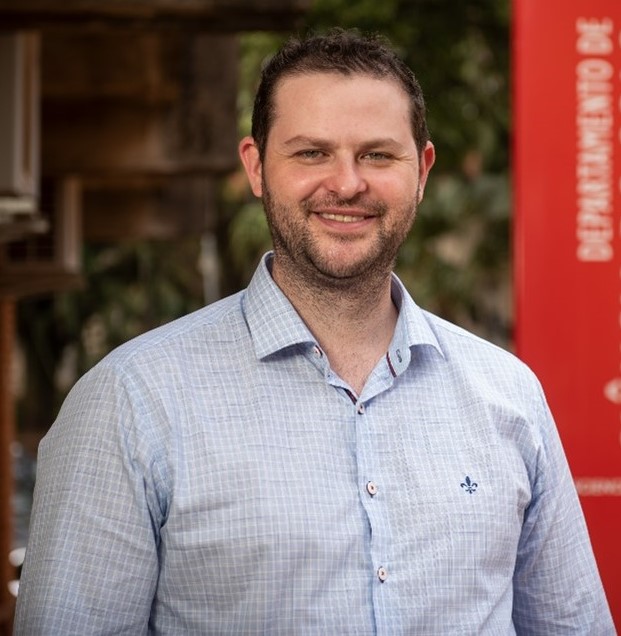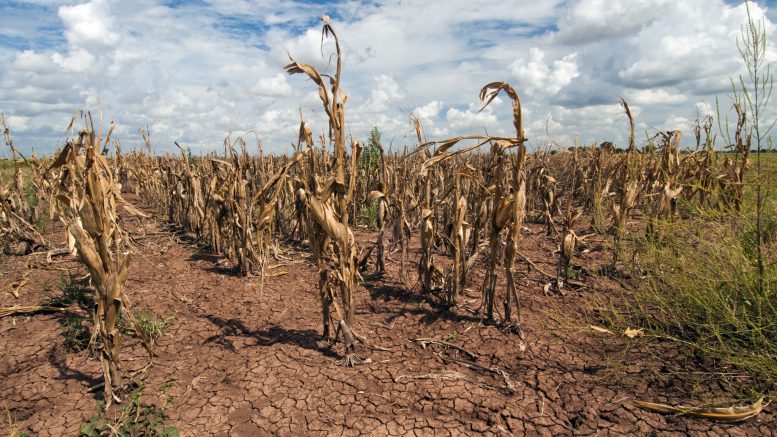“Brazil must play a central role in actions to mitigate greenhouse gas (GHG) emissions and in actions to remove the CO2 that is already in the atmosphere.”
Maurício Roberto Cherubin is a professor at the soil science department at the “Luiz de Queiroz” School of Agriculture – Esalq/USP.
Cherubin is an agronomist from the Federal University of Santa Maria – UFSM, bachelor in administration from the Federal University of Santa Catarina, M.Sc in agronomy from UFSM and Ph.D in soil and plant nutrition from Esalq/USP.

Maurício Roberto Cherubin, professor at Esalq
AgriBrasilis – Brazil plays a fundamental role in reducing gas emissions. Why? What is the participation of the agricultural sector?
Maurício Cherubin – Brazil is among the largest emitters of greenhouse gases in the world, in 5th place, behind China, USA, India and Russia. If we consider the European Union, we are in 6th place.
Unlike other countries, where the energy sector, particularly the burning of fossil fuels, is responsible for the majority of emissions, in Brazil the main responsibility is the shift in land use and forests, that causes almost 50% of national emissions, followed by agriculture and livestock, responsible for 25%.
Brazil must play a central role in actions to mitigate greenhouse gas (GHG) emissions and in actions to remove the CO2 that is already in the atmosphere. Brazilian agribusiness must be a leader in this regard.
AgriBrasilis – What is the origin of the gases emitted? How much carbon is emitted per year and what are the consequences?
Maurício Cherubin – Brazilian GHG emissions totaled 2,422 million tonnes of CO2e (CO2 equivalent) in 2021. The main source of emissions is the shift in land use and forests, predominantly because of deforestation, that emitted 1,188 million tonnes of CO2e. Illegal deforestation must be intensively curbed by the country, so that we are able to reduce emissions.
Agriculture and livestock emitted 600 million tonnes of CO2e, and the main sources are methane from enteric fermentation of ruminants, particularly cattle, soil management or tillage, irrigated rice cultivation, and animal waste management.
Climate change is the main consequence of the increase in GHG emissions. Among the affected sectors, agriculture is the most vulnerable, as it depends directly on the climate.
AgriBrasilis – How is it possible to reduce emissions without financial losses and agricultural productivity losses?
Maurício Cherubin – There are several techniques that can be used in agriculture to reduce emissions and increase carbon sequestration, such as the use of the no-till system, the adoption of cover crops, rational management of fertilizers and organic waste, management of the water used in irrigation, recovery of degraded pastures and adoption of integrated systems. These practices help mitigate climate change and enhance the productivity of agricultural systems.
AgriBrasilis – What are integrated systems and how do they relate to regenerative agriculture? What are its benefits for the farmer?
Maurício Cherubin – Integrated systems are agricultural systems that combine more than one component in the same area. For example: agriculture and livestock; livestock and forestry; agriculture and forestry; and agriculture, livestock and forestry; etc.
These systems are an alternative to diversify the species cultivated in the area, so that one benefits from the other. This generates a diversification of the farmer’s income. In the same area, the farmer can farm grains, meat, milk and wood, and sequester carbon in plants and soil.
System diversification, with greater input of carbon into the soil and benefiting soil health and water and air quality, in a socially and economically viable way, is the basis of regenerative agriculture.
Integrated systems are one of the most promising alternatives within regenerative agriculture.
AgriBrasilis – How can sustainable soil management practices generate environmental and financial returns? What makes a soil considered healthy?
Maurício Cherubin – A healthy soil is chemically, physically and biologically balanced, capable of performing its functions properly.
The main function of the soil is to serve as a medium where plants develop, absorb water and nutrients. But other functions performed by the soil are also vital to our life on the planet. For example: storing carbon and carrying out this climate regulation. Soil is the largest carbon reservoir on the planet, having in its surface layer, one meter long, twice as much carbon as the atmosphere and three times as much as vegetation and animals. Soil carbon sequestration is key to mitigating climate change.
Soil also regulates water flow and purification, provides a habitat for biodiversity (25% of biodiversity is in soil), is a nutrient cycling medium, and a large reservoir of raw materials for the pharmaceutical, cosmetics and construction. The soil is the greatest asset we have, and the farmer must always be aware of that.
AgriBrasilis – In addition to reducing emissions, there is also the removal of gases from the atmosphere. How is it possible to carry out this process in order to generate relevant impacts? Why would only agriculture have this capability?
Maurício Cherubin – The decarbonisation of the atmosphere necessarily involves two fronts: reducing GHG emissions; and remove part of the carbon present in the atmosphere.
Strategies to reduce emissions have been proposed by the transport, energy, industry and agriculture sectors. However, actions to remove atmospheric carbon are much more limited, because of the technological challenges and costs involved.
The agricultural and forestry sectors rely on the most efficient process in the world for removing carbon from the atmosphere, photosynthesis, that is natural and free of charge. Plants remove CO2 and transform it into various organic compounds, that are assimilated into their biomass. Later, with the death of the plant, part of this carbon is sequestered in the soil.
The agricultural and forestry sectors have a unique opportunity to lead this carbon removal agenda, and in fact contribute to Brazil achieving its decarbonization goals.
AgriBrasilis – How can Brazil benefit from the carbon credits market? In what ways does this tool guarantee the reduction of emissions?
Maurício Cherubin – Brazil has great potential to benefit from the carbon market, precisely because of the size of the territory and agri-environmental vocation.
We have interesting and promising initiatives for generating and selling carbon credits in the voluntary market, but the regulated carbon market is still being structured, and should move much higher figures. I am optimistic about the carbon market, but I believe that it will take a few years for it to really become popular and start to generate significant economic impacts.
My suggestion is that we focus on management practices that favor the accumulation of carbon, thinking about the direct benefits in crop productivity and cost reduction. Carbon credits will be a consequence of this process in the medium term. In addition, other forms of remuneration for farmers, such as bonuses for certification, differentiated prices associated with the product’s carbon footprint, discounts on inputs, among other alternatives, may be even more interesting than carbon credits in the short term.
Brazilian agriculture is changing, not just thinking about productivity, but about all these co-benefits generated by the adoption of conservation practices and regenerative agriculture.
READ MORE:
Embrapa Bets on GMO Wheat in Brazil

